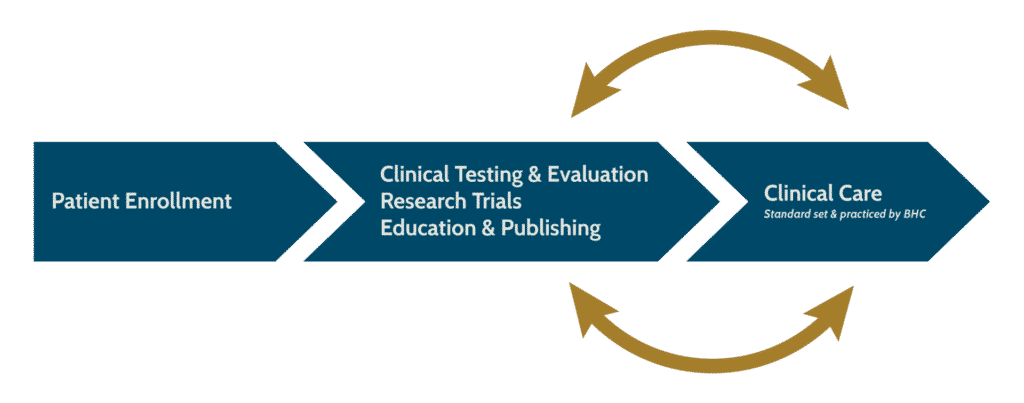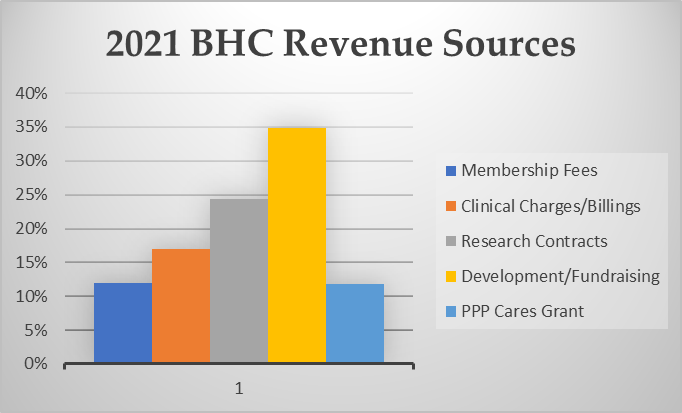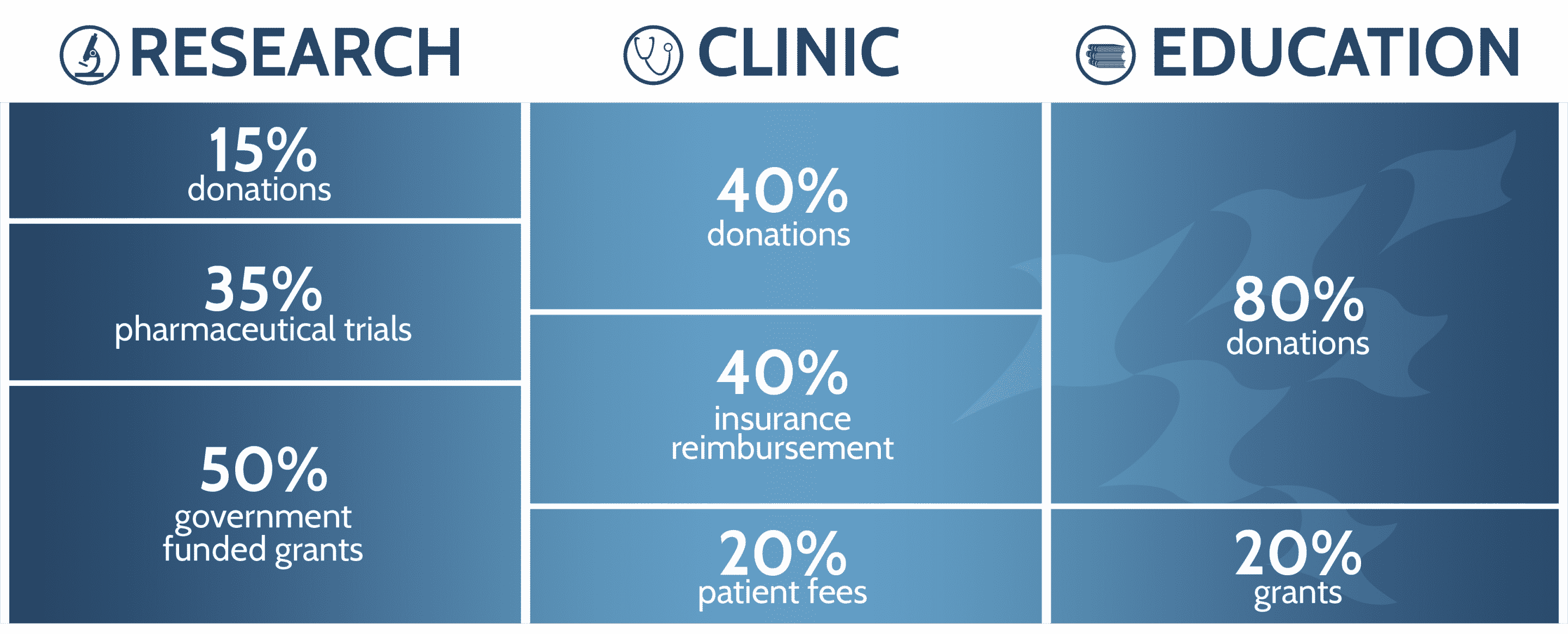On this page, BHC provides insight on the components of its business model, how they interact to ultimately improve clinical care, and the critical revenue streams required to drive and sustain its mission.
Healthcare Model
- Clinical Care – BHC maintains an expert consultation and clinical care center providing patients with a differential diagnosis and health management plan. The clinic also establishes well-defined participants for targeted clinical trials for ME/CFS and FM.
- Research – BHC conducts research driving innovative, emerging research pathways to define the core signs, symptoms, and decrements in specific functioning. This is the starting place for drug development, clinical trials, and treatment for ME/CFS and FM. BHC is unique in its focus on creating objective measures to diagnose ME/CFS and FM. BHC continues to drive biomarker discovery by sharing biological samples and clinical information with the brightest scientists from around the world.
- Education – BHC creates, aggregates, and delivers educational resources and programming for patients and their care partners for improved self-management and to empower with knowledge. BHC also provides informed and comprehensive educational resources and training for healthcare providers to help improve access to quality care.
Model Process
- Enrollment – Prospective patients apply for enrollment at BHC for a comprehensive evaluation, accurate diagnosis, and illness management strategy.
- Engagement – Patient and research participation may involve:
- Clinical testing and treatment strategies
- Research directives, clinical trials, and innovative discovery
- Educational outreach and publishing to impact the BHC Community and help mainstream this illness.
- Outcomes – Are aggregated to deliver and inform future:
- Clinical care and health maintenance model, and
- Testing, treatment, research, and education.

Revenue Sources
- Annual Membership Fees – applies to all enrolled patients (not research-only participants) and covers the value-add of BHC services and participation above and beyond what health insurance contracts are designed to cover. New patients will pay an additional first year fee that covers patient start-up costs.
- Clinical Fees – applies to in-person and telehealth visits with a BHC provider in one or more of the following payment options:
- Insurance Fee for Service – to the extent allowed by the patient’s insurance carrier with associated deductibles and co-pays
- Non-Insured Cash Pay – for those without insurance on a similar scale
- Non–Enrolled Patient Consults – pre-paid stand-alone virtual consults
- Research Fees – applies to contracts where BHC is a collaborative partner or sponsor for research including trials for pharmaceuticals, wearable devices, samples for biomarker discovery, etc.
- Development – applies to fundraising efforts from supporters including major donor and private grant requests. Priority use of development funds include:
- Educational Programming – creation and production of resources for patients and healthcare providers
- Friends of Shauna B Horne Fund – providing financial support to clinical care for financially vulnerable individuals with ME/CFS or FM.
- Innovative Research – fosters BHC-led research projects
- Provider Recruitment – assists in the start-up costs of recruiting new providers

Revenue Allocations

 Lucinda Bateman, MD, is a renowned clinician, researcher, and educator. Her Johns Hopkins University Medical School training instilled an approach to care that she has employed throughout her career - the patient comes first and the unknown or unexplained does not equate to a lack of proper and compassionate care. Since starting her own practice in 2000, she has served on six boards or committees, been the principal investigator for 45 studies, authored/coauthored 40 journal articles, served as adjunct instructor and adjunct assistant professor in the University of Utah Departments of Preventative Medicine, Internal Medicine, and Anesthesiology, and lectured around the world.
Lucinda Bateman, MD, is a renowned clinician, researcher, and educator. Her Johns Hopkins University Medical School training instilled an approach to care that she has employed throughout her career - the patient comes first and the unknown or unexplained does not equate to a lack of proper and compassionate care. Since starting her own practice in 2000, she has served on six boards or committees, been the principal investigator for 45 studies, authored/coauthored 40 journal articles, served as adjunct instructor and adjunct assistant professor in the University of Utah Departments of Preventative Medicine, Internal Medicine, and Anesthesiology, and lectured around the world.